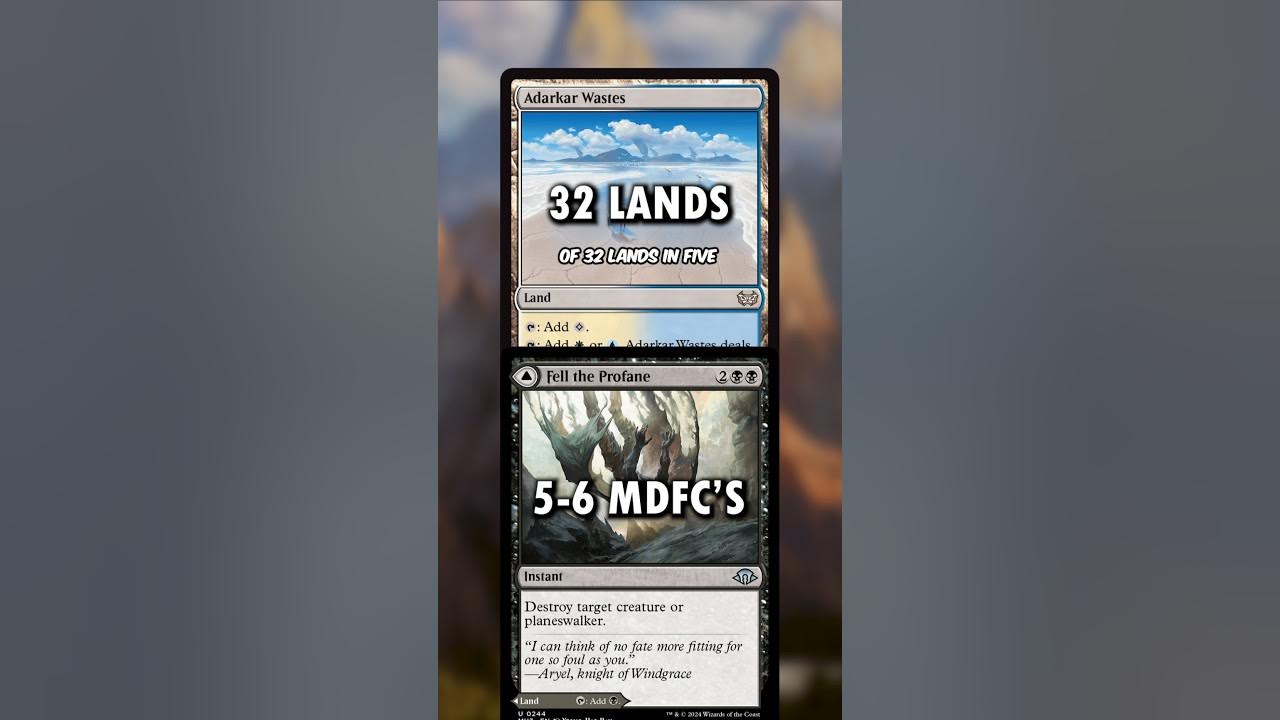5 Common Deck-Building Mistakes in MTG & How to Avoid Them

Building a good Magic: The Gathering (MTG) deck takes more than just throwing in powerful cards. Even experienced players sometimes make errors that hurt their deck’s performance. Whether you’re new or a seasoned player, avoiding these five common mistakes can help you build stronger, more consistent decks.
1. No Clear Game Plan
A deck without direction is a deck that struggles to win. If you don’t have a solid plan, your deck can feel clunky and inconsistent.
Why This Hurts Your Deck:
Your cards might not work well together.You’ll spend more time reacting instead of executing a strategy.
How to Fix It:
Define Your Win Condition: How does your deck win? Fast damage? Locking opponents out? A powerful combo? Pick a focus.
Stay on Theme: Don’t add random cards just because they’re strong—stick to what helps your deck’s main strategy.
Example: A red aggro deck wants cheap creatures (Goblin Guide) and burn spells (Lightning Bolt) to pressure opponents quickly.
2. Bad Mana Curve
Your mana curve (the balance of low, mid, and high-cost cards) directly affects how smoothly your deck plays.
Why This Hurts Your Deck:
Too many expensive cards? You’ll be stuck waiting to play anything.
Too many cheap cards? You might run out of impactful plays later.
How to Fix It:
Balance Your Curve: Here’s a rough guide for a 60-card deck:
8-12 one-mana cards
10-14 two-mana cards
6-10 three-mana cards
4-6 four-mana cards
2-4 five+ mana cards
Adjust Based on Playstyle: Fast decks need lower curves, while control decks can afford more expensive spells.
Example: A midrange deck with Tarmogoyf (two-mana) and Siege Rhino (four-mana) ensures strong plays throughout the game.
3. Weak Mana Base
Mana problems lose games. Having too few lands, the wrong colors, or unreliable fixing can ruin an otherwise great deck.
Why This Hurts Your Deck:
Mana screw (not drawing lands) leaves you unable to play.
Mana flood (drawing too many lands) makes you fall behind.
How to Fix It:
Land Count Basics:
Aggro decks: ~20-22 lands
Midrange decks: ~23-24 lands
Control decks: ~25-27 lands
Use the Right Lands: Dual lands (Sacred Foundry) and fetchlands (Arid Mesa) help fix colors.
Example: A three-color deck should use shocklands, fetchlands, and mana dorks like Birds of Paradise for better consistency.
4. Too Many “Pet Cards”
We all have favorite cards, but if they don’t help the deck win, they shouldn’t be there.
Why This Hurts Your Deck:
Playing cards you like over cards that fit the deck weakens your overall strategy.Inconsistent performance leads to frustrating games.
How to Fix It:
Be Honest About Card Choices: Does this card actively help your deck? If not, cut it.
Test and Adjust: If a card isn’t performing, swap it for something better.
Example: Darksteel Colossus might be cool, but if your deck is built for speed, it won’t help.
5. Not Preparing a Sideboard
For tournament play, your sideboard is key. Ignoring it puts you at a huge disadvantage.
Why This Hurts Your Deck:
You can’t adjust to bad matchups.You’ll struggle against common threats.
How to Fix It:
Identify Weak Spots: If your deck struggles against control, bring in counterplay cards.
Pick Versatile Options: Flexible cards (Abrade for artifacts/removal, Duress for hand disruption) cover multiple scenarios.
Example: Against control decks, sideboarding Carnage Tyrant (hexproof, uncounterable) improves your chances.
Final Thoughts

Deck-building is all about synergy, balance, and smart choices. Avoiding these five mistakes—unclear strategy, bad mana curve, poor mana base, too many pet cards, and no sideboard—can make a huge difference in your success.Want more MTG tips, deck ideas, and cards? Check out https://mtgetsy.com/ for great deals on singles, accessories, and more!



